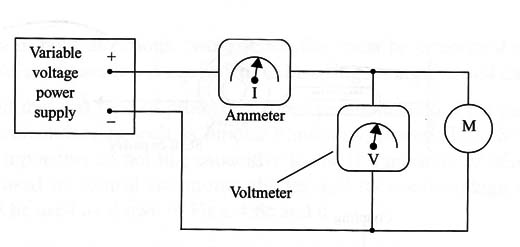Small DC motors have an eficiency of between 60 and 80 percent when operating in their nominal speed ranges, i.e., 50 percent of the maximum speed.
Using only electrical measurements With the circuit shown by Fig. 1, it is possible to estimate the torque of the motor using the following procedures:

1. Measure the current and voltage at the desired speed (use a load to limit the speed.
2. Apply the following formulas.
Formulas:
Considering an efficiency of 80%,
T = 0.8 P/ω
where
P = power sink of the motor
ω = angular speed
T = torque
P = V x I
where
P = power in watts
V= voltage applied to the motor
I = current drawn by the motor
ω = 2 x π x f
where
ω = angular speed
π = 3.14
f = frequency (revolution per seconds)
Obs.: The same techniques can be used to estimate the torque of other rotational sources such as springs, hydraulic motors, and so forth.
SELECTING A HIGH-TORQUE DC MOTOR
The following are hints for finding a high-torque motor when rummaging through a store’s surplus bin:
1. High-torque motors are heavy, due the presence of powerful magnets.
2. The high currents drawn by high-torque motors require large brushes.
3. The shafts tend to be large. Small-diameter shafts indicated less torque in common DC motors.
4. The shaft will resist being turned by your fingers, producing a jerky motion. This is not a conclusive test, but the probability is that a motor that “cogs” in a test with your fingers will have high torque.
5. The electrical connections are made with heavy-gauge wire. The high currents drawn by high-torque motors need heavier wires.



